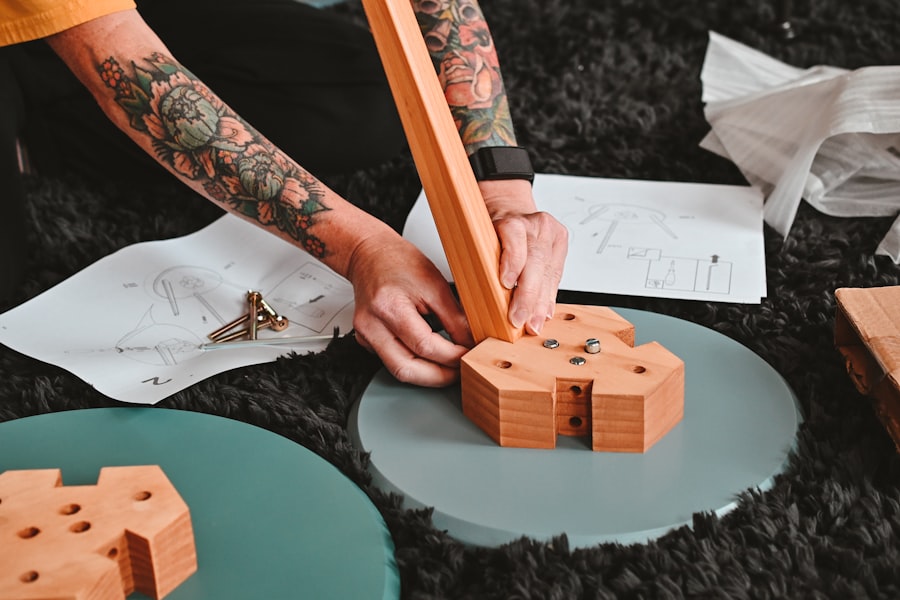Fencing is a crucial component in establishing property boundaries. While pre-fabricated fences are available, they can be costly and may not always meet specific property requirements. Building a homemade fence offers a customizable and potentially more economical alternative.
However, constructing a fence from scratch demands meticulous planning, appropriate material selection, and precise implementation to ensure durability and functionality. This article will outline the process of creating a homemade fence, including planning, design, and construction phases. It will emphasize the importance of selecting suitable materials and provide guidance on fence maintenance post-installation.
Additionally, the article will address methods for evaluating fence effectiveness, troubleshooting potential issues, and making necessary adjustments to optimize the fence’s performance.
Table of Contents
- 1 Planning and Designing Your Homemade Fence
- 2 Choosing the Right Materials
- 3 Building Your Homemade Fence
- 4 Installing and Maintaining Your Fence
- 5 Testing the Effectiveness of Your Fence
- 6 Troubleshooting and Making Adjustments
- 7 FAQs
- 7.1 What is a homemade fence to keep chickens out of the garden?
- 7.2 What materials can be used to make a homemade fence to keep chickens out of the garden?
- 7.3 How high should a homemade fence be to keep chickens out of the garden?
- 7.4 Are there any specific design considerations for a homemade fence to keep chickens out of the garden?
- 7.5 Are there any legal considerations for building a homemade fence to keep chickens out of the garden?
Key Takeaways
- Building a homemade fence can be a cost-effective and rewarding DIY project for your property.
- Careful planning and design are essential for a successful homemade fence, taking into account the layout and purpose of the fence.
- Choosing the right materials, such as wood, vinyl, or metal, is crucial for the durability and appearance of your homemade fence.
- Building the fence requires careful measurement, leveling, and securing of the materials to ensure a sturdy and attractive result.
- Regular maintenance and inspection are necessary to keep your homemade fence in good condition, including cleaning, repainting, and repairing any damage.
Planning and Designing Your Homemade Fence
Determine the Purpose of Your Fence
The first step in the planning process is to determine the purpose of the fence. Are you looking to create privacy, enhance security, or simply add aesthetic appeal to your property?
Choose the Right Style and Height
Once you have a clear understanding of the purpose, you can decide on the style and height of the fence. Consider factors such as the topography of your property, local building codes, and any potential restrictions from homeowners’ associations. It’s also important to consider the layout of your property and mark the boundaries accurately to ensure the fence is built within your property lines.
Create a Detailed Plan and Design
After determining the purpose and style of your homemade fence, create a detailed plan and design. This should include measurements, materials needed, and a layout of the fence. You may also want to consider adding gates or other access points to your fence. Take into account any obstacles such as trees, rocks, or uneven terrain that may affect the placement of the fence. With a clear plan and design in place, you can move on to choosing the right materials for your homemade fence.
Choosing the Right Materials

Selecting the right materials for your homemade fence is crucial for its durability, longevity, and overall effectiveness. There are various options available when it comes to materials, including wood, vinyl, metal, and composite materials. Each material has its own set of advantages and disadvantages, so it’s important to consider factors such as cost, maintenance requirements, and the overall aesthetic appeal of the material.
For example, wood is a popular choice for homemade fences due to its natural look and versatility. However, it requires regular maintenance such as staining or painting to protect it from the elements. Vinyl is another popular choice for homemade fences as it is low-maintenance and durable.
It’s also available in a variety of styles and colors, making it a versatile option for different property types. Metal fences, such as aluminum or wrought iron, are known for their strength and security but may require more maintenance over time to prevent rust or corrosion. Composite materials are a newer option that combines the benefits of wood and plastic, offering a low-maintenance and durable alternative for homemade fences.
When choosing materials for your homemade fence, it’s important to consider the climate and weather conditions in your area. For example, if you live in an area with high humidity or frequent rain, you may want to opt for materials that are resistant to moisture and rot. Additionally, consider the overall aesthetic appeal of the materials and how they will complement the style of your property.
Once you have selected the right materials for your homemade fence, you can move on to the next step: building the fence.
Building Your Homemade Fence
Building a homemade fence requires careful planning, precise measurements, and proper execution to ensure its effectiveness and longevity. The first step in building your fence is to prepare the area where the fence will be installed. This may involve clearing any obstacles such as rocks or vegetation and ensuring that the ground is level and free from any debris.
Once the area is prepared, you can then start installing the posts for your fence. The posts are crucial for providing support and stability to the entire structure, so it’s important to ensure that they are installed correctly. When installing the posts for your homemade fence, it’s essential to space them evenly and align them accurately according to your design plan.
This will help ensure that the fence is straight and level once it’s completed. Depending on the material you’ve chosen for your fence, you may need to use concrete to secure the posts in place. This will provide additional stability and prevent the posts from shifting over time.
Once the posts are in place, you can then start attaching the rails or panels of your fence according to your design plan. If you’re using wood for your homemade fence, it’s important to treat the wood with a protective sealant or stain before installation to prevent rot and decay over time. Additionally, ensure that all connections are secure and that the panels are evenly spaced for a uniform look.
If you’re using vinyl or metal materials for your fence, follow the manufacturer’s instructions for installation carefully to ensure proper assembly. Once the panels or rails are in place, you can then add any finishing touches such as gates or decorative elements to complete your homemade fence.
Installing and Maintaining Your Fence
Once your homemade fence is built, it’s important to install it properly to ensure its effectiveness and longevity. This involves securing all connections, ensuring that gates open and close smoothly, and making any necessary adjustments to ensure that the fence is straight and level. Proper installation is crucial for ensuring that your homemade fence serves its purpose effectively, whether it’s providing privacy, security, or aesthetic appeal.
After installing your homemade fence, it’s important to establish a regular maintenance routine to keep it in good condition over time. This may involve cleaning the fence regularly to remove dirt and debris, inspecting for any signs of damage or wear, and making any necessary repairs as needed. For wood fences, this may include restaining or repainting every few years to protect the wood from moisture and UV damage.
Vinyl fences may require occasional cleaning with soap and water to maintain their appearance, while metal fences may need to be inspected for rust or corrosion. In addition to regular maintenance, it’s important to address any issues that may arise with your homemade fence promptly. This may include repairing loose or damaged panels, replacing broken hardware such as hinges or latches on gates, or addressing any structural issues that may affect the stability of the fence.
By staying proactive with maintenance and addressing any issues promptly, you can ensure that your homemade fence remains effective and visually appealing for years to come.
Testing the Effectiveness of Your Fence

Assessing Privacy and Security
Once your homemade fence is installed and maintained properly, it’s essential to test its effectiveness in serving its intended purpose. For instance, if privacy is a primary goal of your fence, identify any areas where visibility may be an issue and consider adding additional screening or vegetation for added privacy. If security is a concern, test the strength of gates and access points to ensure that they are secure and functioning properly.
Evaluating Aesthetic Appeal
In addition to testing for privacy and security concerns, consider how well your homemade fence complements the overall aesthetic of your property. Does it enhance the visual appeal of your property while providing functionality? Take note of any areas where improvements can be made to enhance both the functionality and visual appeal of your homemade fence.
Identifying Areas for Improvement
By evaluating the effectiveness of your homemade fence, you can identify areas that require improvement. This may include adding additional features, such as decorative elements or functional components, to enhance the overall appeal and functionality of your fence.
Troubleshooting and Making Adjustments
Even with careful planning and execution, issues with your homemade fence may arise over time. It’s important to troubleshoot any issues promptly and make necessary adjustments to ensure that your fence continues to serve its purpose effectively. This may involve addressing structural issues such as leaning or sagging panels, repairing damage from weather or wear, or making adjustments to gates or access points.
If you encounter any issues with your homemade fence, start by identifying the root cause of the problem. This may involve inspecting for loose connections or damaged components that need repair or replacement. Once you’ve identified the issue, take necessary steps to address it promptly before it worsens over time.
In some cases, making adjustments to your homemade fence may involve adding additional support such as braces or reinforcements for stability. For example, if you notice that certain areas of your fence are leaning due to uneven terrain or soil erosion, adding additional support can help correct this issue. In conclusion, building a homemade fence requires careful planning, proper materials selection, precise execution during installation, regular maintenance routine establishment after installation completion; testing its effectiveness in serving its intended purpose; troubleshooting any issues promptly; making necessary adjustments when needed; all these steps are crucial for ensuring that your homemade fence serves its purpose effectively while enhancing the visual appeal of your property for years to come.
If you’re looking for more tips on keeping chickens, you might be interested in this article on farmhouse chicken coop designs. It offers great ideas for creating a safe and comfortable space for your feathered friends.
FAQs
What is a homemade fence to keep chickens out of the garden?
A homemade fence to keep chickens out of the garden is a barrier constructed by individuals to prevent chickens from entering and damaging their garden or crops.
What materials can be used to make a homemade fence to keep chickens out of the garden?
Common materials used for a homemade chicken-proof fence include chicken wire, hardware cloth, wooden stakes, and metal or plastic posts.
How high should a homemade fence be to keep chickens out of the garden?
The fence should be at least 4-6 feet high to effectively keep chickens out of the garden, as chickens are capable of flying short distances and can easily jump over lower barriers.
Are there any specific design considerations for a homemade fence to keep chickens out of the garden?
The fence should be securely anchored to the ground to prevent chickens from digging underneath it. Additionally, the top of the fence can be angled outward to further deter chickens from attempting to fly over it.
Are there any legal considerations for building a homemade fence to keep chickens out of the garden?
It is important to check local zoning laws and regulations before constructing a fence, as there may be restrictions on the height and materials used for fences in residential areas.
Meet Walter, the feathered-friend fanatic of Florida! Nestled in the sunshine state, Walter struts through life with his feathered companions, clucking his way to happiness. With a coop that’s fancier than a five-star hotel, he’s the Don Juan of the chicken world. When he’s not teaching his hens to do the cha-cha, you’ll find him in a heated debate with his prized rooster, Sir Clucks-a-Lot. Walter’s poultry passion is no yolk; he’s the sunny-side-up guy you never knew you needed in your flock of friends!







